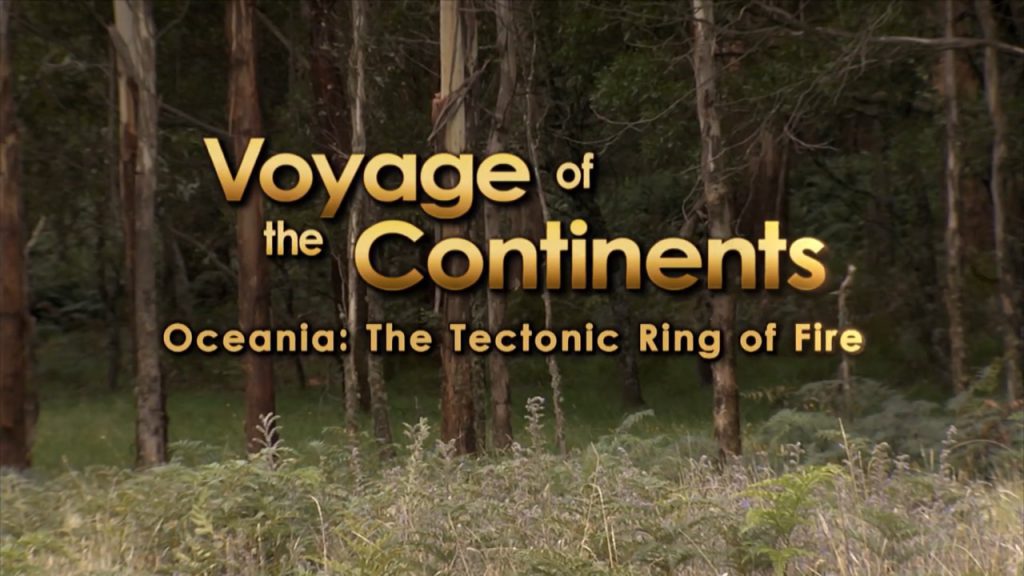Voyage of the Continents episode 1: The history of Oceania is the history of the Earth as a whole. Along with scientists, we track the information recorded in its relief, from the first forms of life on Earth, to their destruction and rebirth. Welded to Antarctica for millions of years, Australia is today a deserted landscape that enjoys extraordinary stability. Its neighbours do not share the same luck. New Zealand is perilously located between two tectonic plates, and the volcanic islands of the Southern Pacific could explode, thus disappearing from the ceaseless Voyage of the Continents. In this episode we explore the fiery results of the collision of the Australian and Pacific plates.
Over the many billions of years of Earth’s history, our planet has never stopped changing. Massive tectonic forces have sculpted and resculpted our world in a never-ending journey. Do you know that Scandinavia was once in the southern hemisphere? And that in the Ardennes we can find coral reefs like in the Bahamas? Or that the largest ocean in the world, the Pacific is endangered? Since its formation 4.6 billion years ago, our Earth has been subjected to forces of incredible power. Around a still hot core, the earth’s crust, driven by mantle convection movements, is in perpetual evolution, tirelessly redrawing the map of the continents and oceans.
As landmasses assemble and separate, they fuel volcanoes and spark earthquakes, building mountains and tearing valleys. They come together or separate on average by a few millimeters or centimeters per year, sometimes more. On the scale of geological time, they shape the reliefs and deep architecture of the continents. We see the Earth, eons in the making, through the eyes of geologists and other scientists.
The history of these continents is part of a “tectonic waltz” of land and sea, a concept as important for the history of the Earth as Darwin’s theory of species for the evolution of Man. Tectonics have created life– and destroyed it as well. Huge volcanoes and devastating earthquakes continue to dominate human history. This is a story of high drama and intense beauty, the interaction of geology and life. A true Voyage of the Continents.
Voyage of the Continents episode 1
The fiery collision of the Australian and Pacific tectonic plates is a well-known phenomenon that has shaped the landscape and environment of the Pacific region for millions of years. The meeting point of these two massive plates, also known as the Ring of Fire, is a site of frequent earthquakes, volcanic eruptions, and other geological activity that has created some of the most awe-inspiring natural wonders on Earth.
The collision of the Australian and Pacific plates has had a profound impact on the geological history of the region, including the creation of mountains, the formation of island chains, and the emergence of new landmasses. The intense heat and pressure generated by the collision have caused the Earth’s crust to buckle and fold, resulting in the formation of the Himalayas, the Andes, and the Rockies, among other mountain ranges. The pressure also causes volcanic activity, resulting in the formation of the numerous volcanic islands in the Pacific Ocean.
One of the most notable examples of the fiery results of the collision of the Australian and Pacific plates is the formation of New Zealand. Located on the boundary between the two plates, New Zealand has been shaped by millions of years of volcanic activity, earthquakes, and tectonic movement. The country’s landscape is characterized by dramatic mountain ranges, geysers, hot springs, and active volcanoes, making it a popular destination for adventure travelers and nature enthusiasts.
The Ring of Fire also has a significant impact on the climate and weather patterns of the region. The volcanic eruptions and earthquakes generated by the collision of the Australian and Pacific plates can cause tsunamis and disrupt ocean currents, which can in turn affect weather patterns and climate change. For example, the eruption of Mount Pinatubo in the Philippines in 1991 caused a significant drop in global temperatures due to the release of volcanic ash and gases into the atmosphere.
The collision of the Australian and Pacific plates has had a profound impact on the geological history, landscape, and environment of the Pacific region. The Ring of Fire is a site of intense geological activity, including earthquakes, volcanic eruptions, and other phenomena that have created some of the world’s most awe-inspiring natural wonders. The impact of this collision extends beyond the region, affecting climate and weather patterns worldwide.
